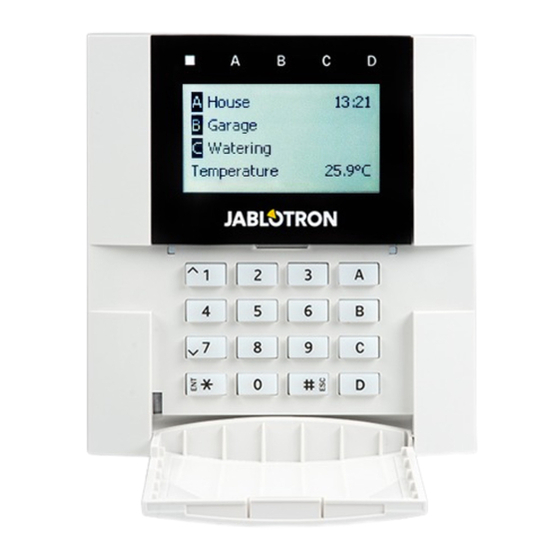Table of Contents
Advertisement
JA-14K(R) Security System Control Panel
A control panel is a fundamental part of the JA-10 series alarm system and is designed to protect small,
medium or large premises and it offers a lot of parameters and also the system profiles compliy with security
grade 2 requirements.
The control panel has BUS and/or wireless device (when the control panel is equipped with a radio module)
compatibility. It is recommended that only JA-10 devices are used with the system. Proper functionality cannot
be guaranteed when using third party devices.
Caution: The JA-10 security system can only be installed by a trained technician with a valid certificate issued
by an authorized distributor.
The manual is intended for trained technicians and is valid for control panel firmware LJ60422 and
N-Link configuration software 2.0.0 or higher.
Advertisement
Table of Contents

















Need help?
Do you have a question about the JA-10 Series and is the answer not in the manual?
Questions and answers